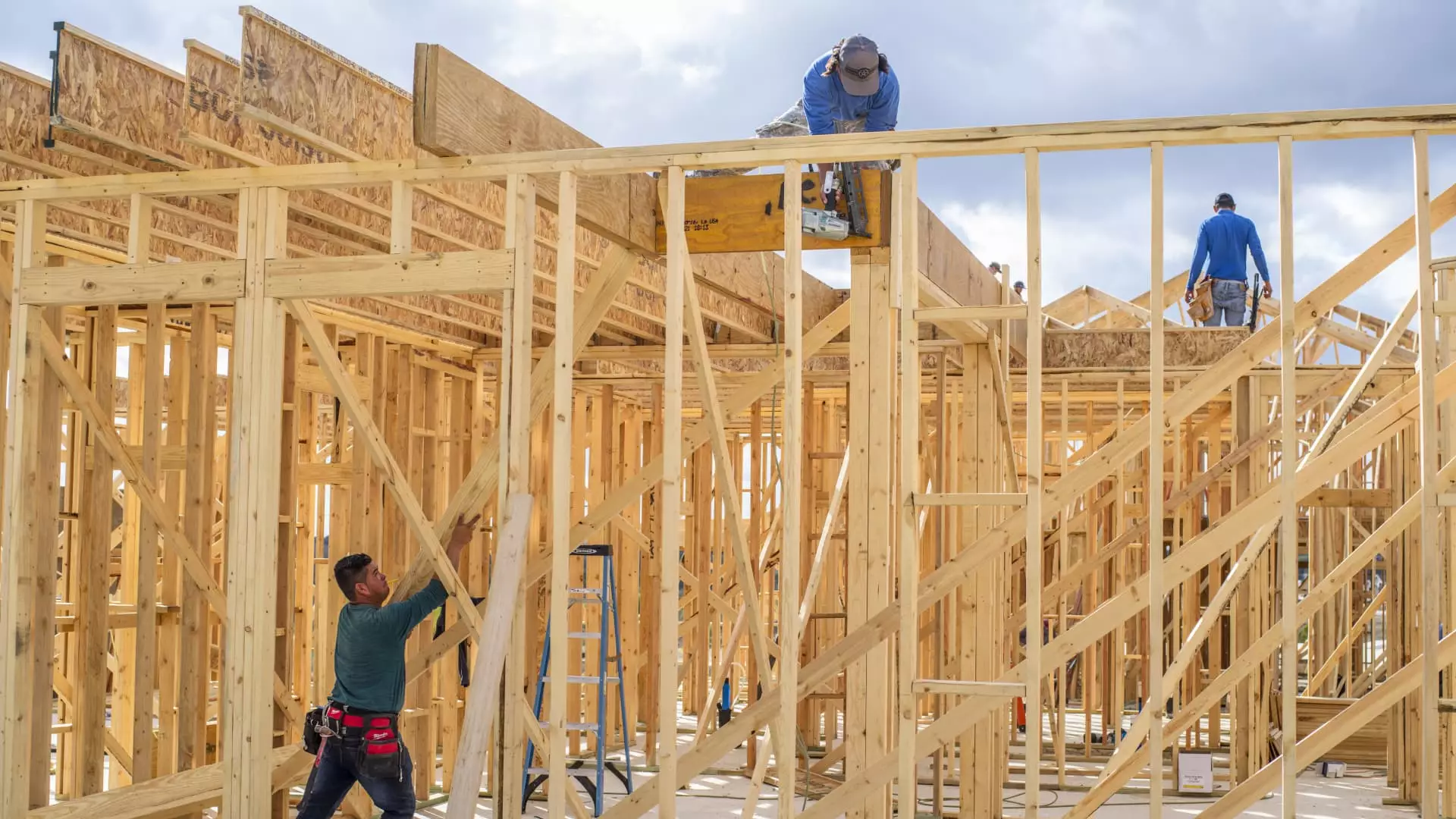The sentiment among single-family homebuilders serves as a bellwether for the wider housing market, revealing underlying trends and concerns that may impact future development. Recent data indicates a marked decline in builder confidence, driven largely by economic uncertainties, increased costs due to tariffs, and a tightening market for buyers. Understanding these dynamics is crucial for stakeholders across the housing spectrum—from developers and investors to buyers and policymakers.
In February, the National Association of Home Builders’ Housing Market Index (HMI) experienced a considerable decrease, plummeting five points to a reading of 42. This decline signifies negative sentiment, as readings below 50 indicate more builders are pessimistic than optimistic about current market conditions. In stark contrast, the HMI was at 48 a year earlier, highlighting a significant shift in builder outlook. According to NAHB Chairman Carl Harris, uncertainty regarding government policy, notably concerning regulatory frameworks and tariffs, has forced builders to recalibrate their expectations for the upcoming years.
The index is comprised of three key components: current sales conditions, buyer traffic, and future sales expectations. All three metrics have shown deterioration; current sales conditions fell to 46, while buyer traffic slipped to 29. Most notably, sales expectations for the next six months took a steep dive, plunging 13 points to 46. This drop to the lowest level since December 2023 signals a troubling trend, especially as builders typically gear up for the peak selling season in spring.
Builders are grappling with not only a fluctuating market but also the looming specter of increased costs stemming from international tariffs, particularly on materials such as softwood lumber and appliances. The anticipated imposition of tariffs from Canada and Mexico has added fuel to their concerns, as a substantial percentage of materials for construction comes from these regions. NAHB chief economist Robert Dietz stressed the gravity of this issues, noting that uncertainty about tariffs causes builders to fear further escalation in costs, thereby challenging their bottom line.
With mortgage rates hovering over 7% at the beginning of this year, the combination of elevated borrowing costs and high home prices has severely strained buyer affordability. This situation creates an environment where potential buyers are increasingly priced out of the market, leading to diminished buyer traffic and a slowdown in home sales.
Interestingly, as the share of builders slashing prices saw a modest decline—from 30% in January to 26% in February—this may signal a broader trend. It appears that the effectiveness of sales incentives is waning, as high prices and interest rates have compressed the pool of viable buyers. Many potential homebuyers are finding themselves priced out of the market entirely, making it increasingly difficult for builders to draw interest through traditional incentives.
Moreover, statements from industry leaders like Ryan Marshall, CEO of PulteGroup, highlight the influence of Federal Reserve policies on consumer sentiment. Even with short-term interest rates being lowered, mortgage rates have remained obstinately high, further contributing to buyer hesitation. As affordability challenges persist, the overall vibe among buyers in the market is one of reluctance, leading to a diminished demand for newly built homes.
As the housing market heads into the crucial spring selling season, the distinct dip in builder sentiment poses significant implications for the overall supply of homes. A drop in construction due to reduced confidence among builders risks tightening the available housing stock just as buyer demand begins to peak. The interplay between elevated costs, policy uncertainty, and affordability issues creates a precarious balancing act for builders striving to meet market needs.
The future of the housing market ultimately hinges on the resolution of these economic pressures. Until there is greater clarity regarding tariffs and more supportive policies for housing development, builder confidence is likely to remain muted. As stakeholders continue to monitor these evolving trends, it becomes clear that robust solutions are urgently needed to revive the housing market and buoy builder optimism.

